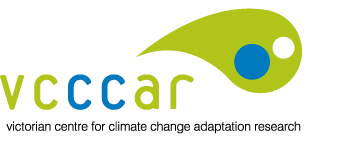Responding to the urban heat island: optimising the implementation of green infrastructure
The aim of this project is to assess the effectiveness of different green infrastructure systems for urban cooling and develop decision-making guidance for urban land managers to optimise the selection and implementation of green infrastructure options.
Integrating Green Infrastructure (GI) e.g. street trees, lawns, green roofs and walls into the urban landscape has the potential to cool the urban microclimate by providing shade and evapotranspirative cooling whilst reducing heat storage. Irrigating green infrastructure with safe and sustainable water sources (storm water, recycled water) will further improve vegetation health and cooling effectiveness. While there are a variety of GI options available, the effectiveness of different options is poorly understood. There is also little guidance for urban land managers on selection and implementation of GI elements for the greatest cooling effect and the policy and institutional requirements for expanding GI in urban environments.
The project team comprises researchers from Melbourne, Monash and RMIT universities.
Final outputs
- A literature review of green infrastructure (University of Melbourne)
- A technical report setting out the scientific foundation and experimental approach for the conduct of thermal imaging and surface mapping (Monash University)
- A multi-scale assessment of urban heating in Melbourne during an extreme heat event and policy approaches for adaptation (Monash University)
- A report analysing the institutional barriers and opportunities to the implementation of green infrastructure (RMIT University)
- A report on decision principles for the selection and placement of green infrastructure to mitigate urban hotspots and heat waves (University of Melbourne)
- A policy brief (Melbourne, Monash and RMIT universities)
- A green infrastructure implementation guide (Melbourne, Monash and RMIT universities)
Research team
Responding to the urban heat island: optimising the implementation of green infrastructure was funded by the Victorian Government through VCCCAR. The project is being undertaken by researchers from Melbourne, Monash and RMIT universities. Project Chief Investigators are Dr Nick Williams from the University of Melbourne and Dr Andy Coutts from Monash University. Other project members include:
Professor Jason Beringer, Monash University
Dr Karyn Bosomworth, RMIT University
Dr Shobhit Chandra, Monash University
Dr Andrew Coutts, Monash University
Assoc. Professor Tim Fletcher, Monash University
Dr Dominique Hes, University of Melbourne
Professor Darryn McEvoy, RMIT University
Professor Nigel Tapper, Monash University
Find out more about the Urban Heat Island project:
Contact Dr Andrew Coutts or Dr Nick Williams


